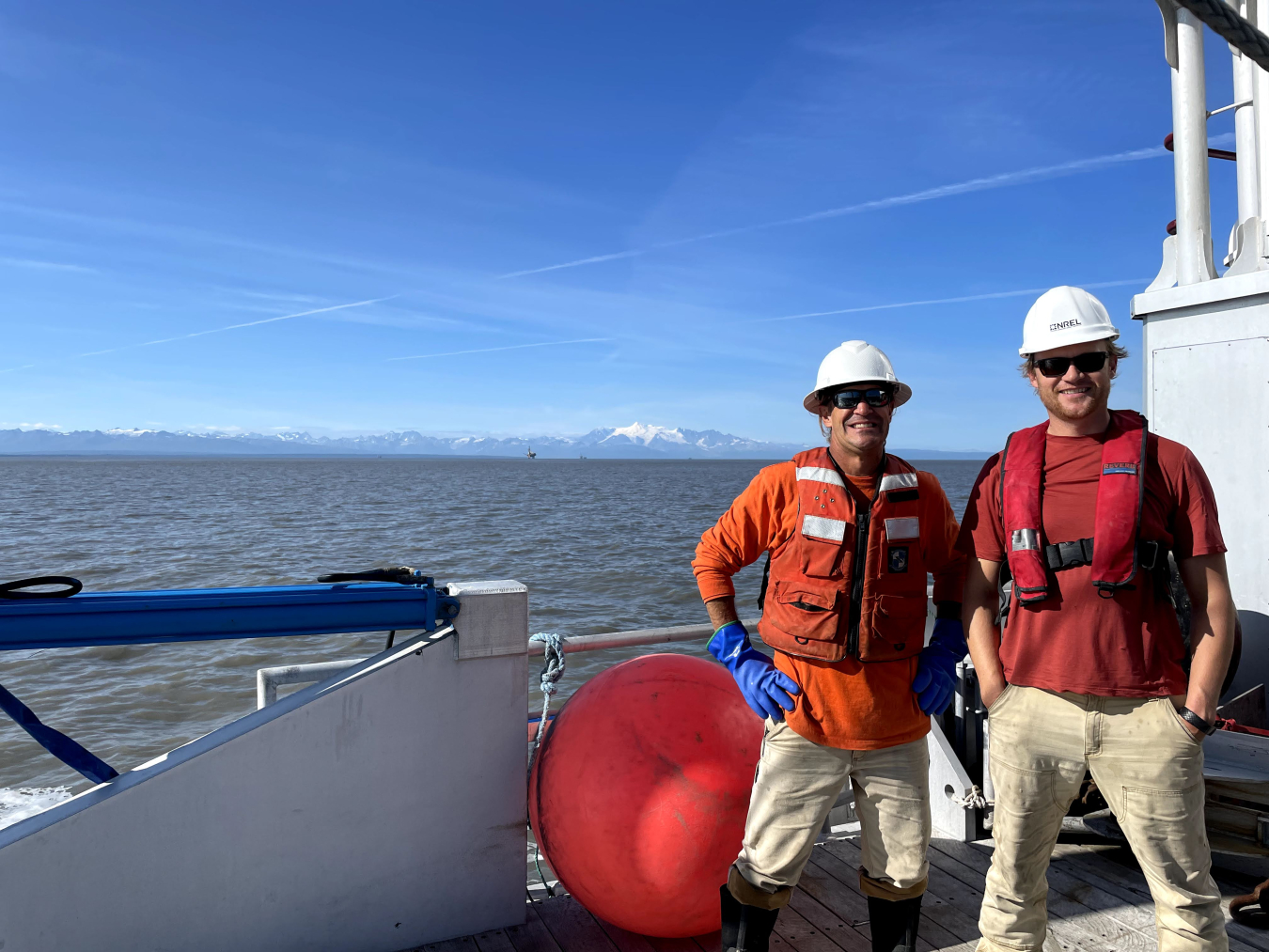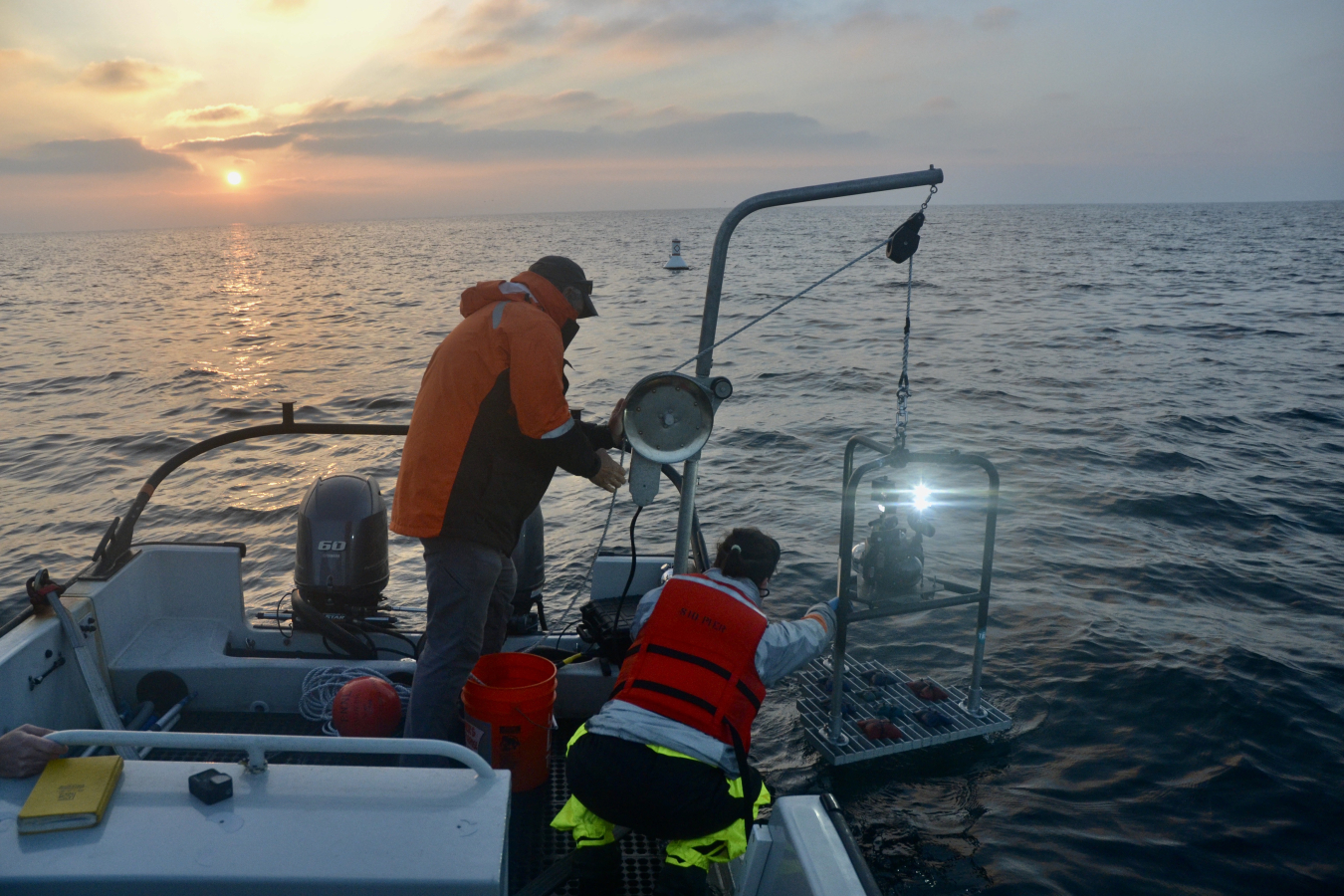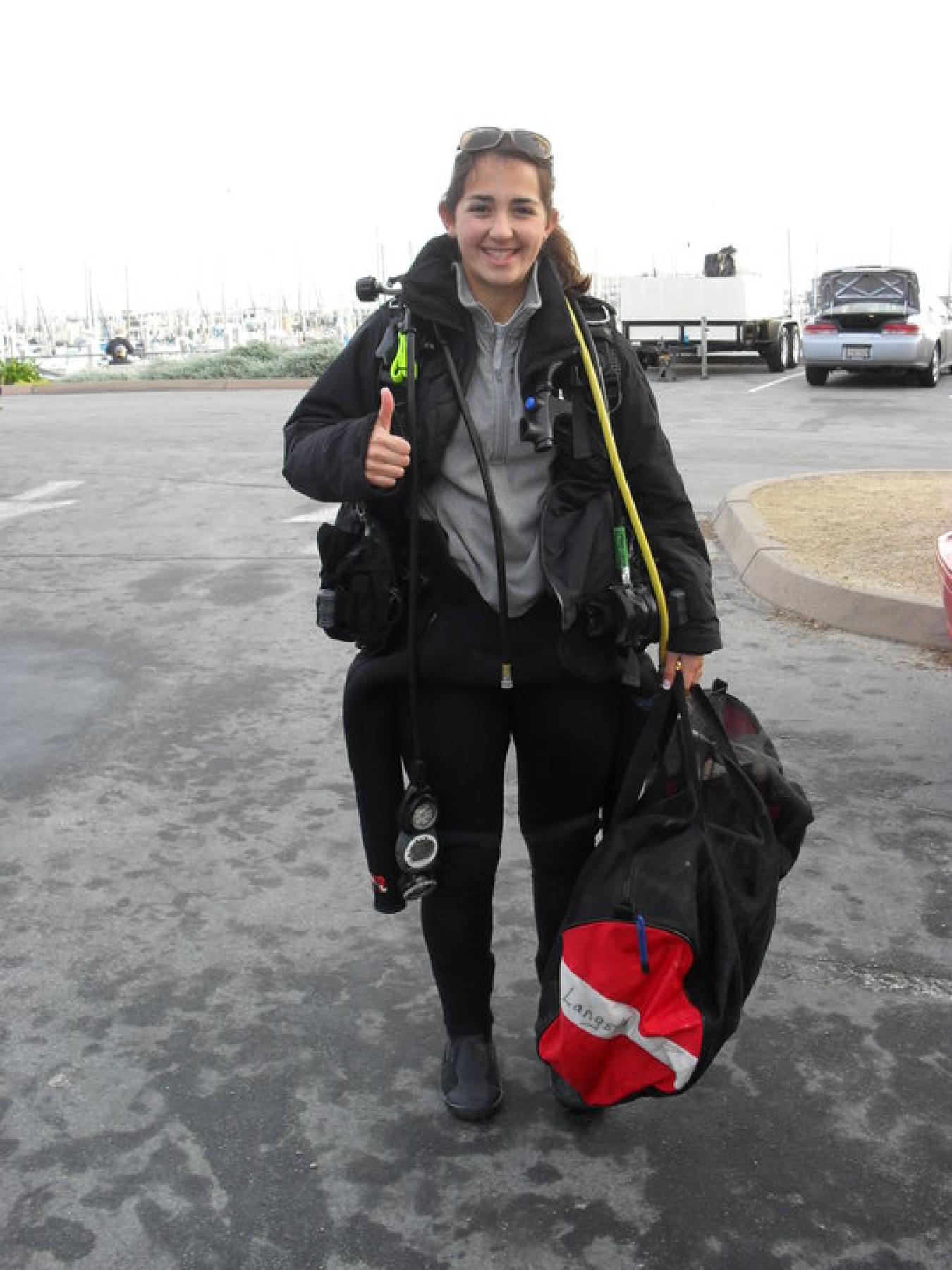Explore the marine energy projects in the Water Power Technologies Office’s 2021–2022 Accomplishments Report that are helping to expand and diversify the U.S. energy portfolio.
Water Power Technologies Office
May 4, 2023Marine energy is powerful and abundant. Across the United States, the power in ocean and river waves, currents, and tides is equivalent to about 57% of all U.S. electricity generation in 2019. Even if only a small portion of this potential is captured, marine energy technologies could make significant contributions to U.S. energy needs.
This clean energy resource could power coastal communities and offshore work, like seafood farming or ocean-observing systems. Today, marine energy technologies are advancing closer to commercialization and ultimately helping the United States meet its clean energy and decarbonization goals.
The Marine Energy Program in the U.S. Department of Energy’s Water Power Technologies Office (WPTO) supports projects across the country at national laboratories, academic institutions, companies, and other organizations focused on research, development, demonstration, and commercial activities. WPTO’s recently published 2021–2022 Accomplishments Report features a selection of these important projects.
Researching the Fundamentals
Researchers are working to help marine energy technologies become cost competitive with other resources. With support from WPTO, Ocean Renewable Power Company developed marine energy hydrofoil (or blade) designs that use new materials to reduce costs and increase energy capture by up to 24%. Meanwhile, a project team led by Ocean Motion Technologies built a prototype wave energy converter that could generate energy from waves as small as those created by boats.

Another project team created a tool for marine energy developers to estimate how much energy their devices could produce at different ocean and river sites. This team also expanded the data available on U.S. marine energy resources with a focus on Alaska’s Cook Inlet.
To inform marine energy materials and manufacturing processes, a project team hosted a workshop that brought together more than 100 people from academia, industry, and DOE national laboratories. These experts shared input on research needs and funding gaps that may need to be addressed to build longer lasting and more affordable and efficient marine energy technologies.
Surging Toward Success
In 2021 and 2022, several research teams tested prototype marine energy devices in the ocean. For example, in July 2022, CalWave Power Technologies, Inc. retrieved its xWave wave energy pilot device after a successful 10-month deployment off the coast of San Diego, California. This deployment represented the company’s (and California’s) first at-sea, long-duration wave energy project. Another project team, led by the University of Hawaii, completed initial design and modeling for a small-scale version of its Hawaii Wave Surge Energy Converter and built and began testing a prototype. This device uses off-the-shelf or readily fabricated turbine components, which could make it more cost-effective.
Meanwhile, researchers at Pacific Northwest National Laboratory developed and demonstrated prototypes of triboelectric nanogenerator systems. These devices can be used to power instruments, particularly low-power instrumentation such as temperature or pressure sensors, aboard hurricane and tsunami detection or water quality monitoring systems.
To support the global marine energy industry, a project team explored and made recommendations for how offshore aquaculture could use marine energy resources for power. Another project team contributed to international marine energy standards, which will help facilitate the certification of marine energy technologies.
Putting Technologies to the Test
When a technology developer creates a new design, testing can be time consuming and expensive. To support developers in testing their devices, the Testing Expertise and Access for Marine Energy Research program connects technology developers with some of the nation’s top marine energy testing facilities and researchers. In Fiscal Year 2022, the program selected 35 technical support recipients.
In 2022, WPTO supported infrastructure upgrades at three of the National Marine Renewable Energy Centers and several national laboratories. Construction also continued on PacWave South, a grid-connected and pre-permitted wave energy test facility off the Oregon coast.

As marine energy developers work to monitor the environment around their devices, they can now reference the first large-scale environmental monitoring methodology recommendations produced from field tests in the United States. Developed by the Triton Initiative Field Trials team, these resources could be used to help speed regulatory and permitting decisions and support developers’ efforts to deploy marine energy devices.
Working for the Future
WPTO also supports efforts focused on building the marine energy industry’s workforce and helping undergraduate and graduate students pursue research and build careers in the field. In 2022, WPTO hosted 17 teams for the third annual Marine Energy Collegiate Competition. These teams developed designs and business plans to power blue economy activities, like marine research and offshore seafood farming, using a range of marine energy technologies. Of these teams, 13 built and tested their designs in wave tanks, and one team tested its prototype in a lake by creating waves with a boat. (The final event for the 2023 competition is taking place May 7–10 at Waterpower Week in Washington, D.C. Stay tuned to the WPTO website to learn the winners!)

Meanwhile, WPTO supported three fellows through the Marine Energy Graduate Student Research Program. These students are advancing their marine energy research, working with institutions that include the Bureau of Ocean Energy Management, Pacific Northwest National Laboratory, and Sandia National Laboratories.
WPTO is also supporting research focused on marine energy’s potential value to the grid. One research team developed a framework to assess marine energy’s potential grid benefits, like supporting local resilience and complementing other renewable energy resources. This framework helps quantify these benefits to support future grid planning and investment decisions.
The Power of Possibilities
Many remote and island communities and offshore industries depend on fossil fuels even while powerful waves, tides, and currents surge nearby. In 2022, WPTO supported the Energy Transitions Initiative Partnership Project (ETIPP), which competitively selected 12 remote and island communities for technical assistance. ETIPP connects these communities with regional organizations and national laboratories to develop strategies to improve their energy resilience, or the ability to anticipate and adapt to changing conditions and recover rapidly from energy disruptions.
WPTO also hosted two marine energy-focused prizes in 2022. The office awarded $1 million in the conclusion of the Waves to Water Prize, during which competitors developed some of the first prototypes to be deployed that use wave energy to produce clean drinking water. As part of preparations to test competitors’ devices, a National Renewable Energy Laboratory team deployed its Hydraulic and Electric Reverse Osmosis Wave Energy Converter. (The team also deployed the device a second time to collect data to advance the lab’s research on small-scale wave energy converters.)
WPTO also hosted the latest phase of the Ocean Observing Prize, which challenges competitors to develop new ocean-observing technologies powered by marine energy. Teams tested their prototypes in a state-of-the-art wave tank at the Naval Surface Warfare Center in Carderock, Maryland.
Harnessing the power of ocean and river waves, currents, and tides can help the United States make progress toward its clean energy and decarbonization goals. WPTO’s 2021–2022 Accomplishments Report highlights a few of the many projects advancing the marine energy industry.
Learn more about marine energy and explore the marine energy accomplishments in the WPTO 2021–2022 Accomplishments Report. Stay up to date with the latest marine energy funding opportunities, events, and news by subscribing to the monthly Water Wire and the bimonthly The Water Column newsletters.

